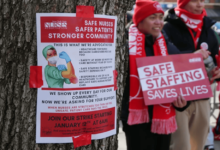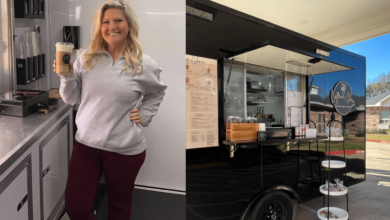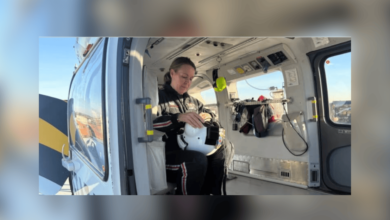Nurse campaigns for strokes to be redefined in ambulance guidelines

Tens of thousands of people have backed a nurse’s campaign to redefine strokes from “potentially serious” to “life-threatening” conditions in ambulance policies.
Nicola Derbyshire, a stroke specialist nurse and stroke coordinator at Countess of Chester Hospital NHS Foundation Trust, has set up a petition to redesignate the condition as a Category 1 ambulance call.
“We must demand an urgent change”
Nicola Derbyshire
Her petition received more than 50,000 signatures in just a matter of days, and has also had the backing of consultants and leaders within her trust.
Currently, NHS ambulance trust guidelines across England designate strokes as a Category 2 incident – a call that is “an emergency or potentially serious condition” and must be answered quickly.
North West Ambulance Service, for example, states that a Category 2 incident must be answered in an average of 18 minutes, and within 40 minutes at least nine out of 10 times.
Category 1, meanwhile, encompasses “life-threatening” injuries or illnesses and must be responded to with even greater priority, in an average of seven minutes and within 15 minutes at least nine out of 10 times. These calls include cardiac or respiratory arrest.
Ms Derbyshire said, in her time as a stroke nurse, the lower categorisation has meant patients under her care have deteriorated because of the longer wait for an ambulance, or the subsequent delays patients face for further transfer.
Moving strokes to Category 1 would, Ms Derbyshire suggested, give patients better outcomes, avoid deaths and reduce hospital stays – which in turn saves the health service money, too.

Nicola Derbyshire
“I’ve seen patients who have come in, fantastic timing and the crews got there within half an hour – we’ve thrombolysed and the patient’s gone home the next day with no disability,” she said.
“But the other week, we had a patient for whom it took an hour and a half for the ambulance crew to get to him. We were able to thrombolyse him, Walton [Hospital] accepted him and it took a further two and a half hours for the patient to go there.
“They then couldn’t do the thrombectomy because there was too much damage to the brain, and that patient died. I’ve seen this a number of times. Even if they don’t die, if we can’t do the thrombolysis on time, they are left with massive disabilities.”
According to the Stroke Association, patients lose around 1.9 million neurons for every minute delay in treatment, and Ms Derbyshire emphasised the importance of prompt thrombolysis for all cases.
She added: “If the categorisation was a Cat 1, we’d be at the top of the list. Regardless of the fact this will help the patient, it will help the NHS because the quicker we see them, the more we can do for them and the quicker they get out.”
The stroke specialist nurse said she hoped that the NHS and the Department of Health and Social Care (DHSC) would heed the calls from the clinicians backing her petition to change the guidelines.
“A lot of people who don’t work in stroke [teams], even if they’re a nurse, assume a stroke is a Category 1 call. It’s a killer. It’s not just the disabilities, it kills patients.
“The NHS say it’s an emergency situation with the FAST (Face, Arms, Speech, Time) campaign, but then it’s a Category 2.
“We’ve thrombolysed patients and they’ve walked out of the hospital the next day having come in with a dense weakness – they couldn’t move.
“It works if we treat them in time – we have patients who [because of delayed treatment] could be with us for three to six months. It’s frustrating,” she said. “We must demand an urgent change.”







